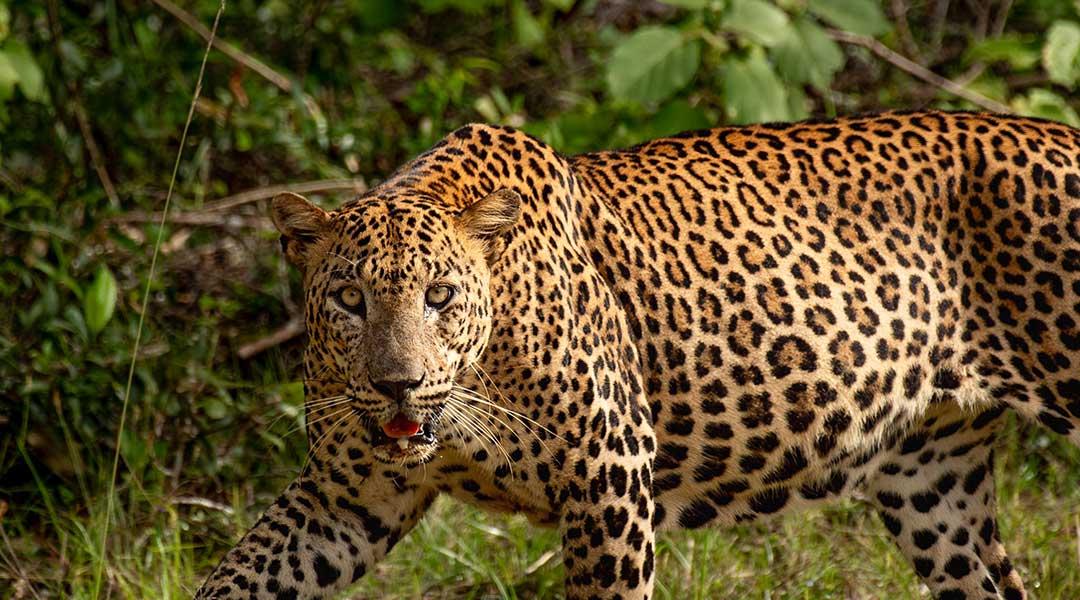Introduction
Tucked away in the northwestern lowlands of Sri Lanka lies Wilpattu National Park, a sanctuary of mystery, ancient ruins, and unparalleled natural beauty. Among its most celebrated residents is one of the island’s most elusive and majestic creatures: the Sri Lankan leopard (Panthera pardus kotiya). For wildlife enthusiasts and conservationists alike, Wilpattu offers a rare glimpse into the life of this critically important apex predator.
The Sri Lankan Leopard: A Subspecies Like No Other
The Sri Lankan leopard is a subspecies endemic to the island, and it is the top predator in the country's ecosystems. Slightly larger and stockier than its mainland relatives, it plays a crucial role in maintaining the balance of its natural habitat. Unlike in many other parts of Asia, leopards in Sri Lanka have no competition from lions or tigers, making them true kings of their domain.
Why Wilpattu?
Wilpattu, meaning “Land of Lakes,” is dotted with over 100 natural lakes or “villus” that serve as watering holes for its diverse wildlife. These wetlands, surrounded by dry-zone forest, provide an ideal hunting ground for leopards. The park's thick scrub and tall trees offer perfect camouflage, which makes sightings rare but all the more thrilling.
Though Yala National Park is often considered the best place to see leopards due to its higher population density and openness, Wilpattu offers a quieter, more immersive experience. Here, the sightings are less frequent, but far more special, often involving a lone male resting under a tamarind tree or a mother leading her cubs to water.
Behavior and Ecology
Leopards in Wilpattu are mostly solitary, nocturnal creatures. They can sometimes be spotted during the early mornings or late afternoons, especially during the dry season when they are more likely to visit the villus. Their diet includes sambars, spotted deer, wild boar, and even monkeys—Wilpattu provides ample prey for these stealthy hunters.
Interestingly, because of the absence of other large carnivores, Sri Lankan leopards are less shy and more likely to be active during the day compared to their African or Indian cousins.
Conservation Challenges
Despite their ecological importance, Sri Lankan leopards face serious threats. Habitat loss, human-wildlife conflict, and poaching continue to endanger their survival. In Wilpattu, illegal deforestation and encroachment for agriculture have sparked concern among environmentalists and local communities alike.
Efforts by the Department of Wildlife Conservation, along with NGOs and eco-tourism operators, are crucial in protecting these animals. Responsible safari tourism can play a role in their conservation by raising awareness and funding anti-poaching initiatives.
How to Spot a Leopard in Wilpattu
Patience is key. Hire a knowledgeable guide, start your safari early, and keep a sharp eye near watering holes and sandy game trails. Bring binoculars and a good camera, but also take a moment to just be present—few experiences compare to the quiet thrill of seeing a leopard in the wild.
Final Thoughts
Wilpattu National Park isn’t just a wildlife destination—it’s a place where time seems to slow, and nature unfolds in its rawest form. The Sri Lankan leopard, with its graceful stride and piercing gaze, is the embodiment of this untamed spirit. To see one here, in this ancient forest filled with whispering winds and still waters, is not just a wildlife encounter—it’s a spiritual experience.
Tips for Visitors:
-
Best time to visit: February to October (dry season).
-
Entrance: Via Wilpattu Junction (near Puttalam).
-
Recommended gear: Neutral-colored clothing, sun protection, binoculars, DSLR camera with telephoto lens.
-
Safari operators: Choose eco-certified guides to ensure minimal environmental impact.

